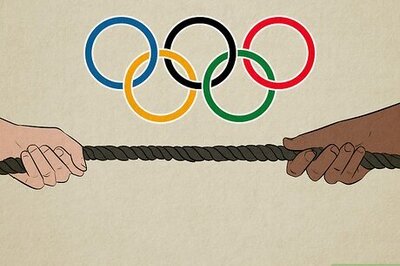
views
With butter spread thin and wine output drying up, whatever next for the unlucky French? A shortage of foie gras, the must-have liver pate that takes pride of place on most Christmas tables.
Two waves of bird flu leading to the cull of millions of ducks and geese in southwestern France have caused production to plunge by 44 percent since 2015, according to the CIFOG foie gras trade association.
The shrinking output has fed into prices, which have climbed between 10 and 30 percent depending on the packaging and quality.
The shortage comes on the back of a butter crisis, with retail supplies melting -- and prices rising -- as wholesalers channel their stocks into Asian markets with a newfound taste for the spread.
The crisis sparked panic buying at French supermarkets and a spate of do-it-yourself butter-making videos on YouTube.
To make matters worse, an unusually mild March and frosty April combined to wreck part of this year's wine harvest, depressing output by 19 percent.
While the overall quality of the grapes is up, so too are wine prices.
Now, the French also face having to fork out more for their beloved foie gras, a controversial delicacy made from the livers of force-fed poultry that is usually rolled out during Christmas and New Year celebrations.
A typical 200-gramme (seven-ounce) block of duck foie gras of the Delperyat brand is currently selling for 13 euros ($15.40).
The foie gras industry, which had export earnings of some 55 million euros ($65 million) in 2015, has been reeling since the H5N1 bird flu virus hit late that year.
Just as producers were recovering from that onslaught, the highly pathogenic H5N8 virus struck a year later.
Liver lovers undaunted
Goose liver pate -- prized for its sweeter taste and longer finish in the mouth -- will be in especially short supply this year after bird flu wiped out entire flocks in the Landes region as well as neighbouring Gers.
Maison Paris, a goose farm in the Landes town of Pomarez, saw its flock shrink to 200 from its usual 1,000.
"We are keeping livers for buyers who are especially passionate about this product and a few high-end stores," said farm manager Sandrine Lesgourgues.
Despite the industry's woes, it can rest assured that old gastronomic habits die hard.
A consumer study carried out in May found that 92 percent of respondents would still buy foie gras in France despite higher prices.
A family of four can expect to pay two euros more for their share, said CIFOG head Marie-Pierre Pe, adding: "Psychologically that's not a major obstacle for a pleasure that remains exceptional."




















Comments
0 comment